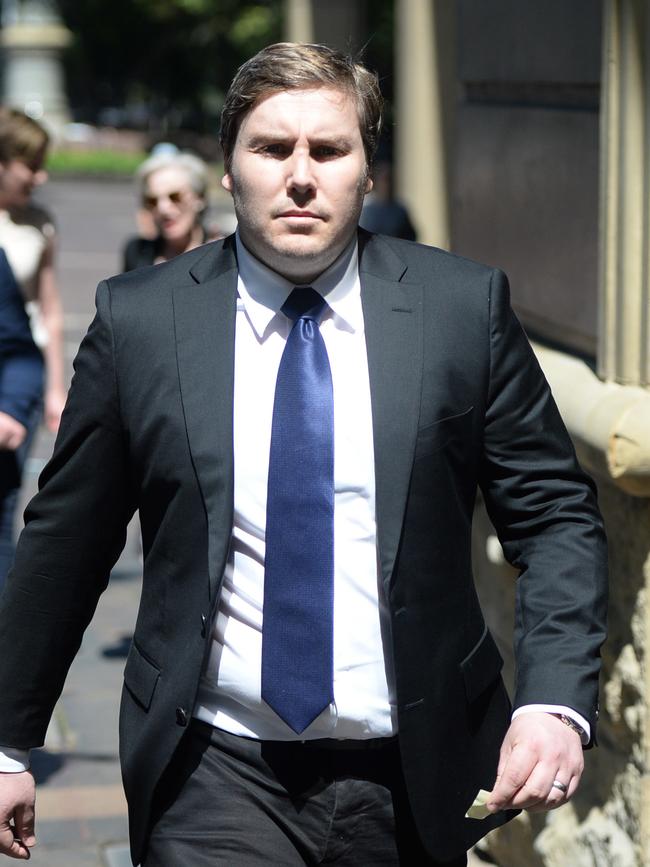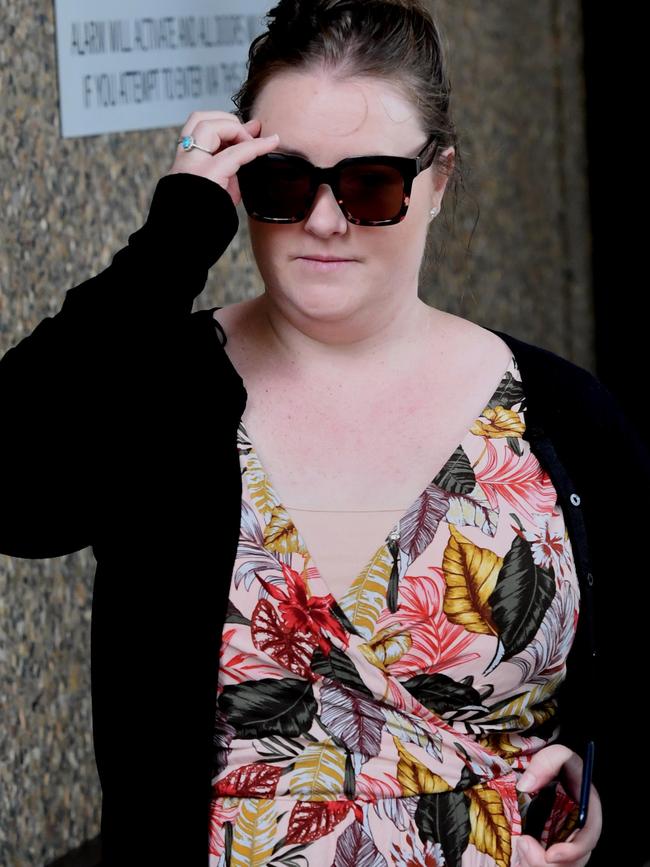The Swindle: Adam Cranston tax fraud jury started at 15 but was reduced to 10
With an eight month trial, it was a smart move to put extra jurors on the $105m tax fraud trial for Adam Cranston and his co-conspirators.
Police & Courts
Don't miss out on the headlines from Police & Courts. Followed categories will be added to My News.
A pregnancy, Covid, insomnia, a new job and a sleeping juror all threatened the $105 million tax fraud trial of Adam Cranston, the son of an ex tax office boss.
Five jurors were discharged at various points of Cranston’s long running trial in the NSW Supreme Court, which can now be revealed after the remaining ten jurors found Cranston and four others guilty over their roles in one of the biggest tax frauds in Australias’ history.
Cranston, the son of ex Australian Taxation Office deputy commissioner, Michael Cranston, was found guilty on March 7 alongside tax lawyer Dev Menon and ex pro snowboarder Jay Onley of fleecing the ATO.
Cranston’s sister Lauren and another man, Patrick Willmott were later found guilty of their roles.


The jury verdicts ended the trial, which began in April 2022, and experienced several disruptions when jurors were discharged.
Usually, there are 12 jurors in NSW criminal trials. But Cranston’s was allocated 15 given the length it was expected to go for.
The first juror was discharged on June 28 when they were diagnosed with Covid.
The timing couldn’t have been worse and came on the back of the trial judge, Justice Anthony Payne, missing a week with Covid. The trial was delayed for a further week and two days when two other jurors caught Covid.
The jury was reduced to 13 on July 20 when one wrote to the judge explaining they were struggling with insomnia.
AUDIO: Listen to Adam Cranston’s conversation with his father in the interactive player below
“My lack of attention when the trial is in session has, in my opinion, impaired my judgment as a juror as I keep missing details as they are presented,” the juror wrote. “My presence has always been a distraction for the other jurors as they have to try to keep me awake.”
On August 30, another juror withdrew after their employer refused to continue paying them while they were on the trial, reducing the number to 12.
“Receiving only the juror allowance will make it very difficult to meet my family’s financial obligations, therefore I request to be discharged from jury service so that I can return to work,” the juror wrote.
On January 16, with the end of the trial in sight, Justice Payne refused to discharge another juror when a fellow juror dobbed them in for sleeping during the trial.
“The juror in question falls asleep most days, multiple times a day – and sometimes multiple times during even the short 40 min sittings,” the juror wrote.
Justice Payne refused to discharge the juror and explained that “after nine months of trial, to my observation the juror in question has been attentive to evidence and submissions.”
A week later, another juror was forced to withdraw because she was late into a pregnancy and was suffering from a pregnancy related illness.
The jury was reduced to 10 people on March 6 – one day before the first round of guilty verdicts – when another juror was discharged because they needed to attend training for a new job and would lose their employment if they did not attend.
HOW THE SCAM WORKED
The scam was huge and presented as a cross between a stylish heist movie and a suicide mission.
The court heard it was led by a group of three highly intelligent, greedy and unapologetic men – some aged in their 20s and 30s – who figured out how to game the system and made off with $105 million in just four years.
The only problem is they stole so much money that the authorities were always going to come looking for it.
And their structure was not complex enough that it would not take long for the police to map out the structure and follow the money trail.
Lawyer Dev Menon incorrectly thought otherwise A recording police secretly made in February 2017 was played at the trial were Menon said: There’s no forensic accountant in the world … I can’t even f —ken piece this together.”


At the apex of the organisation with Meno and Jay Onley was Adam Cranston, the son of then senior tax official and fraud investigator Michael Cranston. Now 36, Adam was in his late 20s when police believe the scheme was devised. The trial was told by Crown Prosecutor Paul McGuire SC that Adam established the legitimate company known as Plutus Payroll, which was purchased by one of his other companies in 2016. Plutus’ clients included companies ranging from government departments to IT companies.
Collectively, they transferred more than $1 billion to Plutus.
The company had no trouble attracting a long list of clients given that it offered its payroll services for free.
Plutus was then meant to transfer its clients’ GST and PAYG tax obligations to the ATO.
But instead of doing this, Cranston’s group created a layer of second tier companies and transferred the funds there. The companies were run by straw directors – whose ranks included junkies and disgraced businessmen – to disguise the involvement of Cranston and others.
The second tier companies then only transferred a portion of the money to the ATO – holding back as much as 40 per cent of the money.
Those stolen funds were then transferred to Cranston and others using a variety of methods, including other shelf companies, fake invoices or the bank accounts of other companies.



